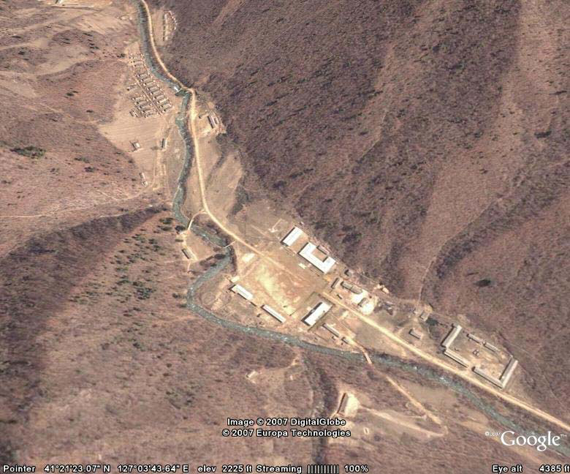
I am having technical trouble with this post. The whole thing is cross posted at Danger Room.
Well, after American negotiators Chris Hill and Joe DeTrani admitted that earlier estimates of the North Korean nuclear program were exaggerated, the Office of the Director of National Intelligence is trying to put the toothpaste back in the tube.
Yeah, good luck with that.
ODNI released a statement by North Korea Mission Manager Joseph DeTrani stating that “The Intelligence Community had then, and continues to have, high confidence in its assessment that North Korea has pursued” a “uranium enrichment capability.”
OK, sure. Unfortunately, that has exactly nothing to do with the today’s controversy. From the late 1990s, the US intelligence community had suspected North Korea of “efforts to acquire a uranium enrichment capability.” So that wasn’t the issue. It was how big those efforts were that mattered—ultimately in leading the Bush Administration to pull out of talks in 2002. In other words, Pyongyang’s cheating on its previous nuclear deals wasn’t all that important; the size of the cheating was.

Here are two of the stories that I reference:
(1) Shin Yong-bae, “U.S. pinpoints 3 suspected sites in North Korean nuclear program,” The Korea Herald, October 21, 2002.
(2) “N. Korea has secret uranium production facility: daily,” Japan Economic Newswire, June 8, 2000.
Baseless speculation or not, the picture still looks great.
Jeffrey – Where did that Bob Gallucci citation originally come from?
The Gallucci quote is from a PBS interview.
http://www.pbs.org/wgbh/pages/frontline/shows/kim/interviews/gallucci.html
I’ve kept quiet for a bit here, but I think I now have to protest characterizations that the administration purposely and deceptively overstated the uranium program in 2002 (with emphasis on deceptively). A much more likely explanation, based on the very little information available, is that the nature of the intelligence changed, not the nature of the analysis or political spin on analysis. It’s not clear what piece or pieces of information the IC received in July 2002 that caused the dramatic change (as Armitage describes it) from an R&D program to production. Whatever it was, it appears to come from a single source, which is obviously problematic.
The change between 2002 and today is likely due to a number of factors. First, it’s almost certain that further intelligence was gathered that either diminished the credibility of the information Armitage cited, or provided additional context that weakened the assessment of a full-scale production program. Secondly, the North Koreans appear to have scaled-back or perhaps even ceased much of their work on enrichment. Whether that was due to the exposure of the program and US pressure or the North’s realization that enrichment is not easy isn’t clear.
So I don’t see charges that the administration lied in order to provide a casus for pulling out of the framework as particularly convincing, even given prior misuse of intelligence.
Finally, we don’t know the basis behind the CIA’s 2002 estimate that stated the North Korean enrichment facility “could be” operational “as soon as mid-decade.” In intelligence-speak using “could be” and “as soon as” is another way of saying “we don’t have a lot of information and this is the worst case scenario.” Unfortunately, this often is translated into a solid assessment or even fact when intelligence is quoted. Even you, Jeffrey, incorrectly stated in your previous post the CIA believed the facility “would be operational by “mid decade.” That’s not what the NIE, in fact, said.
Finally, in my experience, when faced with grossly inadequate information on a topic or capability, policymakers typically want a worst-case estimate and the CIA’s caveated “mid-decade” language jives with that. One of my pet peeves in regard to intelligence writing is the lack of clarity that allows intelligence conclusions to be misinterpreted, particularly by laymen, but that’s a subject best left for another time. I’m sure the classified portion of the NIE is more clear, but the CIA and IC in general should use more precise language in summaries, particularly those that are declassified.
Chris hill was interviewed on NPR this morning. Here’s the link for the transcript and audio:
http://www.npr.org/templates/story/story.php?storyId=7750373
Chris Hill on North Korean Uranium: